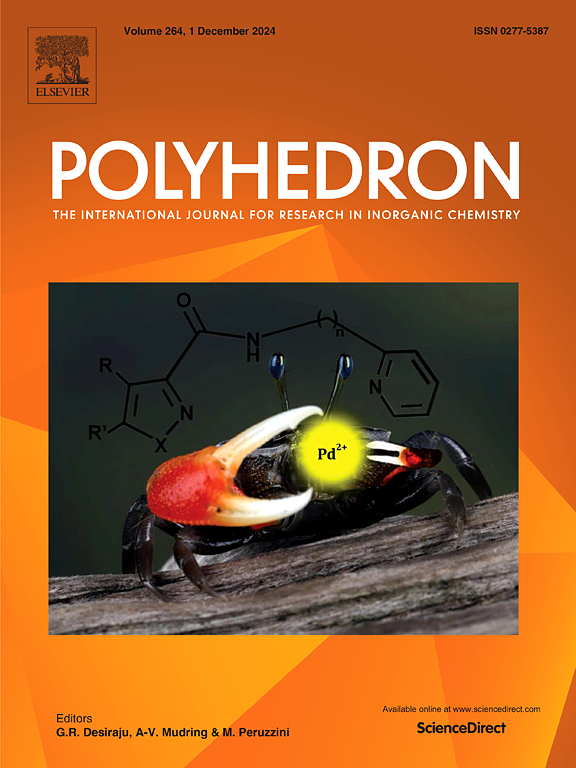Synthesis, characterization and incorporation of two phosphine-based ruthenium(II) complexes into lipid nanocarriers as potential antimicrobial agents
IF 2.4
3区 化学
Q2 CHEMISTRY, INORGANIC & NUCLEAR
引用次数: 0
Abstract
The reaction of RuCl3 with dppb = 1,4-bis(diphenylphosphino)butane yielded the binuclear complex [Ru2(dppb)3Cl4] (I), which was used as a precursor in the preparation of the [Ru(dppb)(Spym)2] (II) (Spym = 2-mercaptopyrimidine). These compounds were characterized using spectroscopic and electrochemical techniques, X-ray crystallography, and elemental analysis. Despite their promising biological profiles, they exhibit poor water solubility (<0.005 mg mL−1), which limits their potential use as antimicrobial agents. To overcome this issue, we employed an encapsulation strategy that incorporated these metal complexes into lipid nanoparticles to improve their solubility and enhance their potential therapeutic action. This nanoformulation containing Pluronic F-127 and Capryol 90 showed the best profile with an enhancement of solubility of up to 4,900-fold. Additionally, preliminary in vitro antibacterial assays against Gram-positive (Staphylococcus aureus and Staphylococcus epidermidis) and Gram-negative bacteria (Pseudomonas aeruginosa and Escherichia coli) were carried out with free and nanoencapsulated metal compounds along with empty lipid nanoparticle as well. Surprisingly, the empty-nanoformulation also showed bacteriostatic activity, which highlights an issue that must be carefully addressed during the use of any nanostructure. Nevertheless, this nanoformulation required the metal compound II for biocidal action (MBC of 128 μg mL−1), which should be further investigated.

求助全文
约1分钟内获得全文
求助全文
来源期刊

Polyhedron
化学-晶体学
CiteScore
4.90
自引率
7.70%
发文量
515
审稿时长
2 months
期刊介绍:
Polyhedron publishes original, fundamental, experimental and theoretical work of the highest quality in all the major areas of inorganic chemistry. This includes synthetic chemistry, coordination chemistry, organometallic chemistry, bioinorganic chemistry, and solid-state and materials chemistry.
Papers should be significant pieces of work, and all new compounds must be appropriately characterized. The inclusion of single-crystal X-ray structural data is strongly encouraged, but papers reporting only the X-ray structure determination of a single compound will usually not be considered. Papers on solid-state or materials chemistry will be expected to have a significant molecular chemistry component (such as the synthesis and characterization of the molecular precursors and/or a systematic study of the use of different precursors or reaction conditions) or demonstrate a cutting-edge application (for example inorganic materials for energy applications). Papers dealing only with stability constants are not considered.
 求助内容:
求助内容: 应助结果提醒方式:
应助结果提醒方式:


